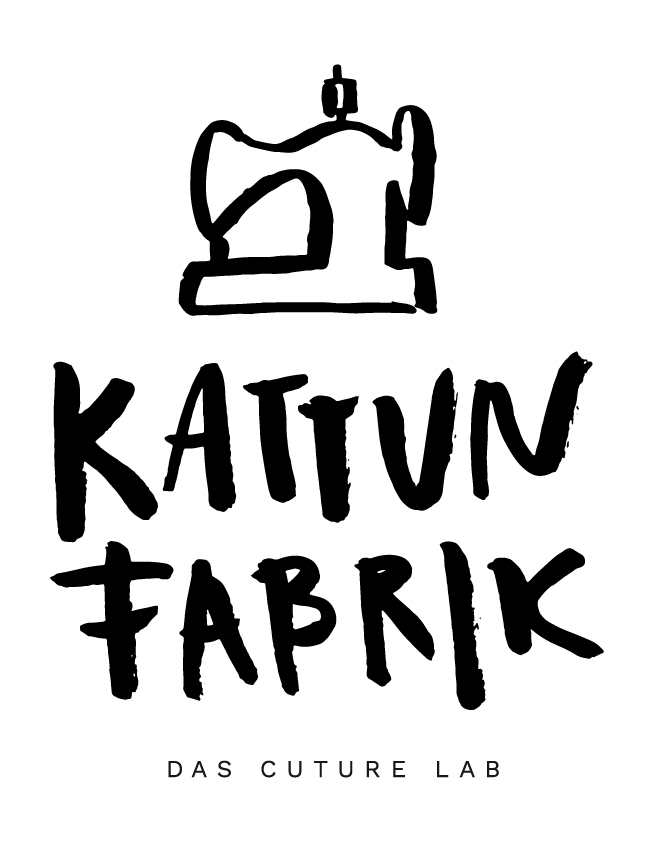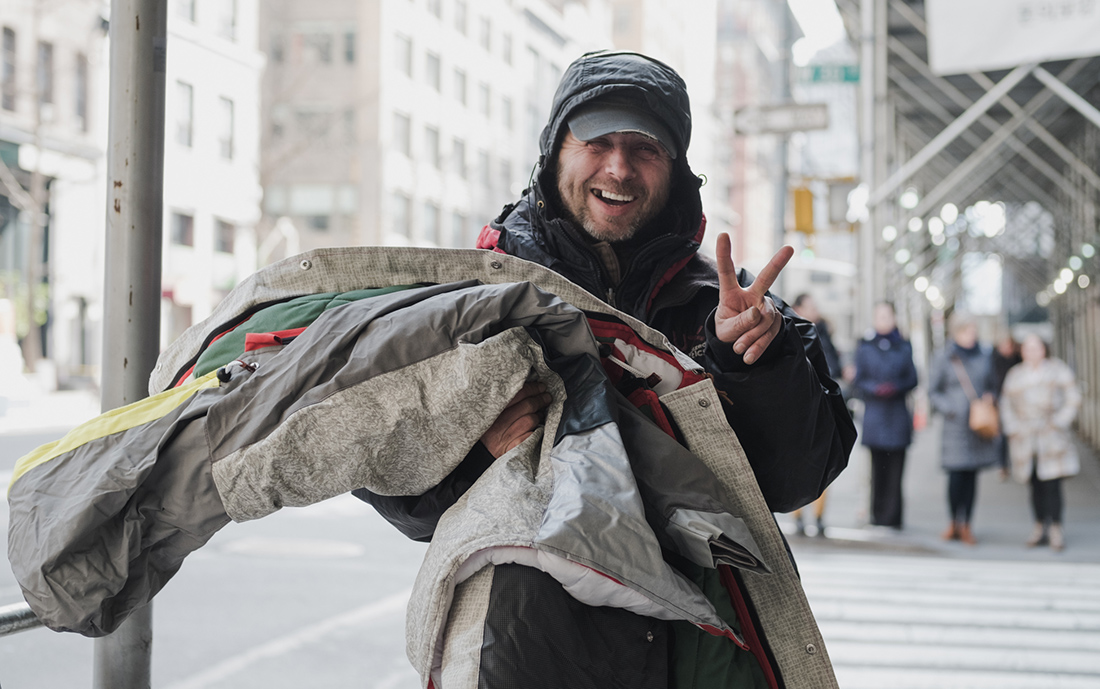Six pioneering initiatives that upcycle festival waste for a good purpose

During our research on the Sheltersuit Foundation, we noticed that this organization is not the only one that rescues and processes tent fabrics, which are usually donated brand new or as surplus goods directly from the fashion industry. There are now several notable initiatives that specifically go to festivals to collect broken or abandoned tents in order to create new products from them. Their motivation is to set an example with regard to the mountains of waste on site, to draw attention to the abuses and to contribute to waste avoidance. In the best case scenario, aspects of sustainability and waste avoidance become established at festivals over time. We present some of them here.

Sheltersuit Foundation – Warmth, protection and dignity for the homeless
Dutch fashion designer and founder of the non-profit organization Sheltersuit, Bas Timmers, has designed an innovative multifunctional jacket that helps homeless people to survive on the streets during the cold season. The 3-in-1 concept of the multifunctional warmth dispenser is innovative: the Sheltersuit consists of a windproof and waterproof jacket, an optional sleeping bag (attachment) and a practical rucksack for transportation. The jacket can be quickly and easily converted into a sleeping bag to provide immediate protection. The additional features, which are perfectly tailored to the needs of homeless people, include a large hood that protects the face from rain and the glare of streetlights and large jacket pockets that can hold loose items and keep them close at hand. The sheltersuits are made in a social sewing workshop in Enschede in Holland. They are a completely upcycled product, mainly made from textile waste that would have been thrown away due to production errors such as a misplaced logo. An exciting detail: the inner lining is made as far as possible from recycled sleeping bags that are donated through collaborations with Pinkpop and the Zarte Cross Festival, because these are also often simply left behind.
Re- and upcycling in the fashion industry for a good cause
Large events and festivals are considered a place of waste. Tents and sleeping bags become disposable and are simply left behind because they are defective or too difficult to dismantle. Mountains of garbage pile up after every festival. At large festivals, up to 10,000 tents can accumulate, totaling around 15 kilos of waste per person. It can take several weeks for this to be completely disposed of. However, many visitors do not seem to realize the extent of this, and the aim of some convincing concepts is to break through this collective indifference. Recycled materials are now also popular with large fashion companies. Unfortunately, in the textile industry there are still no proper recycling processes for synthetic materials, such as the plastic from which the tents are made, so they end up in the incinerator. The fact that the topic of sustainability is up-to-date is also evident from the fact that festival operators, together with existing initiatives, are now setting up collection points for tents and are increasingly focusing on waste separation, reusable systems and the distribution of bin bags for visitors. Repair services for damaged tents and the rental of tents and equipment are also newly established services.

tentation – From a throwaway society to a circular economy
In her studio, Hamburg-based designer Katrin Rieber creates unique products from materials that have already been declared waste. The idea came to her in 2017 at the sight of abandoned festival tents and she founded her sustainable fashion label tentation shortly afterwards. She wanted to give these materials a new lease of life and created a collection of rain jackets that could be used at a festival.
The process from collecting the tents to the sewing machine is time-consuming, but for such valuable materials, the incinerator would not be an option for her. Basically, she tries to recycle all the components of the tents and not just limit herself to the tent fabrics like other upcycling projects. Her team also doesn’t cut up an intact tent if it could still be used by other organizations as a tent for people in need. The response so far has been good. However, the issue that concerns her is the circular economy in the fashion industry, where recycling and upcycling is still pioneering work. She wants to make materials usable for longer, and Rieber is currently planning a merchandise line with festival logos. Her goal is to open her own inclusive workshop in Hamburg, because she wants her fashion to be 100% made in Germany and fair.
tentation and the eco-initiative Utopia jointly promoted greater sustainability with an upcycling campaign as part of a new sustainability concept for the Rock am Ring 2022 music spectacle. Bags, rucksacks and jackets were made from leftover tents, the profits of which benefited ecological and social projects.


Raindance – A sustainable alternative to the disposable poncho
Three students from Enactus Wuppertal e.V. developed the idea for Raindance during an idea sprint because they were surprised and shocked by the amount of waste at festivals and the ignorance of festival-goers. Many festival-goers simply leave their tents behind and the mountains of garbage are enormous. In other regions of the world, however, people lack a roof over their heads. The young team wants to solve this inequality. The idea is to sew stylish rain ponchos from the fabric of tents left behind at festivals. These are to be offered via online stores and at festivals themselves as a sustainable alternative to cheap disposable ponchos. The proceeds from the sale of ponchos will be used to collect and refurbish more tents and take them to where they are really needed: refugee camps, crisis areas and disaster relief. The first prototypes have already been designed and sewn, and professional patterns and designs are now being developed in cooperation with design schools. Some tent manufacturers and retailers have already been taken by the idea and are supplying the material for the development phase, so that nothing stands in the way of the coming festival season.

The Tent Collectors – A roof over the head for refugees
Thousands of tents, sleeping bags and mattresses are left behind after festivals and end up in the garbage. A couple from New Zealand have found a use for the leftovers. Kate Robertson saw the extent of the suffering in the refugee camps on Samos during her voluntary service. Back home, she and her partner Sam Reynolds discussed the immense waste problem during the summer festival season. Then they put one and one together and took action. Today, they always raise awareness about waste prevention on the first day of the two biggest festivals, directly on site. Because it’s unbelievable how much waste is left behind. At the end, a team of volunteers collect around 400 tents and 400 sleeping bags. They are then thoroughly cleaned, packed and stored. Their goal was to fill a 20-foot shipping container. They went in search of donations to cover all the logistics and transportation costs. In view of the situation in the refugee camps in the Mediterranean, the campaign was more than worthwhile from a cost, environmental and humanitarian point of view, despite the high effort involved. The aspect of avoiding waste alone is hugely important to them.

ReTent – Kiel start-up gives abandoned tents a second life
After the party comes the big clean-up: the music-loving students at ReTent GbR turn discarded tents into stylish sports or festival bags. At Wacken Open Air alone, they collected 400 tents to recycle them and create new products. Their mission is to reduce the amount of waste at festivals in order to make them more sustainable and environmentally friendly. They offer a range of products via an online store. The products can also be branded and sold as merchandise at festivals.

Die Kattunfabrik e.V. – The Austrian alternative to fast fashion
At the Viennese upcycling project “die Kattunfabrik – das Culture Lab”, homeless or unemployed people can learn and refresh their tailoring skills and practise on practical projects. Here, rain jackets are made from old festival tents. Experience has shown that many refugees in particular bring basic textile skills with them, but they naturally lack knowledge of German, especially technical terms from the textile industry. The participants can learn these in their own training workshop and are well prepared for the job market afterwards. Upcycling projects that turn supposed garbage back into something useful are urgently needed for the Kattunfabrik to counteract environmental pollution. The rain jackets are produced from abandoned festival tents, which are collected, cleaned, cut to size and sewn together to make them waterproof. With slogans such as “Garbage protects” or “Fancy trash”, the Kattunfabrik draws attention to the sustainable, social idea behind its jackets: for every jacket sold, another one goes to people in need.
MORE ABOUT THE PROJECT

Sheltersuit
In February 2024, we are supporting Sheltersuit. Find out more on the project page:
Questions, Critique, Ideas? Message us!
Andreas Renner, Co-Founder GOOD: andreas@good-search.org
